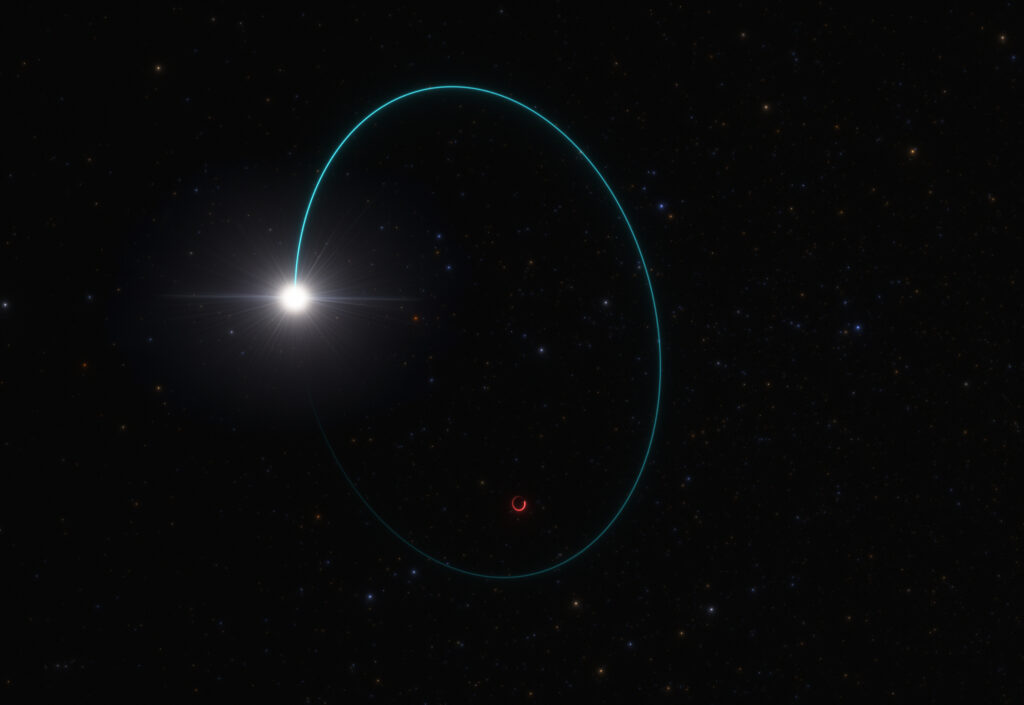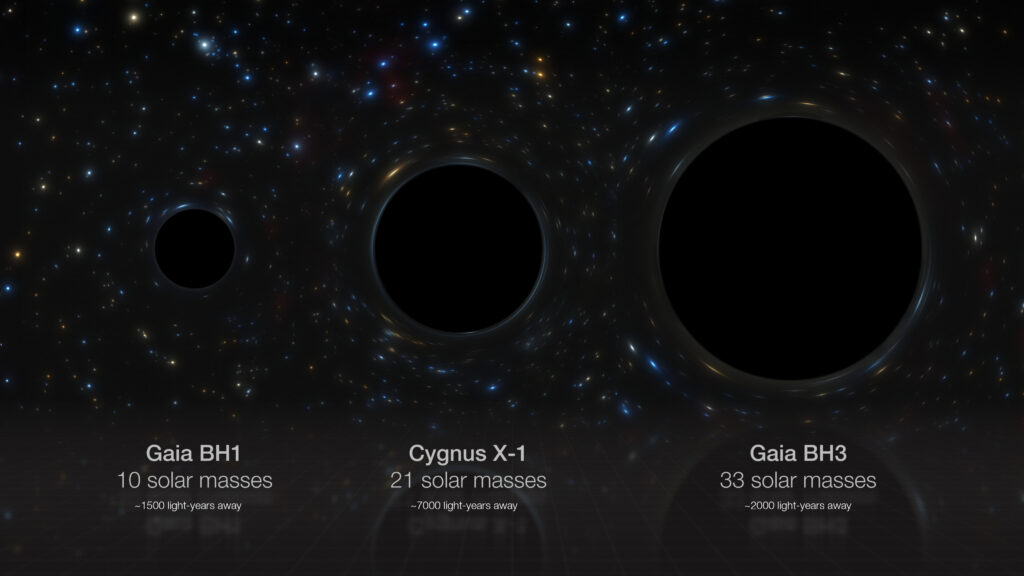Astronomers have announced the discovery of the most massive stellar-mass black hole in the Milky Way. It was found using the Gaia telescope.

Black holes are divided into two main types. The first are supermassive black holes located in the centers of most galaxies (including ours). Their masses are millions or even billions of times higher than the solar one.
The second type is stellar-mass black holes. Such objects are formed as a result of the collapse of massive stars. On average, they are 10 times more massive than the Sun.
Until recently, the largest stellar-mass black hole in the Milky Way was considered to be Cygnus X-1, which has a mass 21 times that of the sun. However, now this indicator is significantly covered by the Gaia BH3 black hole. Its mass exceeds the mass of the Sun by 33 times.

Gaia BH3 was first discovered during the analysis of data collected by the Gaia telescope. It was able to identify deviations in the star’s orbit caused by the gravity of its invisible companion, which can only be a black hole. Later, its existence was confirmed with the help of ground-based observatories. Gaia BH3 is located 2,000 light-years from Earth in the direction of the constellation Aquila. Thus, it is the second known black hole closest to Earth.
According to scientists, such massive black holes can be formed as a result of the collapse of stars, in the chemical composition of which there are very few elements heavier than hydrogen and helium. Such luminaries lose less mass during their lifetime and, consequently, they have more material left for the formation of black holes after their death. The results of spectral analysis show that the BH3 companion is a very metal-poor luminary. This means that the progenitor star of the black hole was also poor in metals.
Earlier we talked about the fact that primordial black holes could still be components of dark matter.
According to https://www.eso.org
Follow us on Twitter to get the most interesting space news in time
https://twitter.com/ust_magazine


